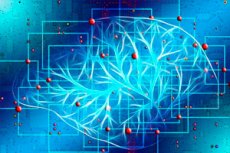How do dopamine surges affect the brain?
Last reviewed: 07.06.2024

All iLive content is medically reviewed or fact checked to ensure as much factual accuracy as possible.
We have strict sourcing guidelines and only link to reputable media sites, academic research institutions and, whenever possible, medically peer reviewed studies. Note that the numbers in parentheses ([1], [2], etc.) are clickable links to these studies.
If you feel that any of our content is inaccurate, out-of-date, or otherwise questionable, please select it and press Ctrl + Enter.

Dopamine surges influence the behavior of living things, expanding its variety and making it more habitual.
An adult thinks and plans most of his/her actions in advance: he/she knows what he/she wants and what others require from him/her, and makes a plan of his/her next steps. This applies both to solving complex mathematical problems and to the question of buying food for dinner. In addition, actions often act as a reaction to something: for example, it is cold outside - a person puts on a jacket, water in a pot boils - turns down the heat or turns off the stove.
However, in addition to the above, spontaneous actions often occur: a student chews on a pen while doing a test paper, a student taps his fingers on the surface of the table while thinking about an answer, a viewer clenches his fists or teeth while watching a movie, and so on. Such spontaneities are as common as planned situations. Some spontaneous behaviors are repeated and become habits over time.
It has long been proven that habits are formed under the influence of certain centers of the nervous system, in particular, the dorsolateral part of the corpus striatum, whose neurons are activated when it is necessary to refine or adjust the sequence of actions that begin to become a habit. Support for such processes is provided by the amygdala and its upper lateral part. The centers of the reinforcing mechanism use dopamine as a kind of mediator. Recently, scientists decided to see if dopamine has other functions in setting up spontaneous actions.
The experiment was performed on rodents wandering aimlessly in a dark room. A protein was synthesized in the rodents' brains that glowed when dopamine was delivered: the light was captured by a built-in fiber-optic device. All activities of the rats were recorded on a video camera.
The rodents' dopamine levels were constantly changing with varying intensity. At a slight rise in the level, the rats jumped slightly, but generally remained calm. At a strong dopamine spike, the rodents dramatically changed their behavior: it became spontaneous and diverse. The rats would stand on their feet, twirl their heads, move around chaotically, etc. Interestingly, such spontaneous movements were repeated for several minutes after the end of the surge. Thus, the increase in dopamine stimulated the animal to random actions, after which it acted in a consolidating manner, as if developing a habit. Using rodents as an example, it was possible to demonstrate how the effect of dopamine at the level of nerve cells and neuronal circuits is reflected in behavior.
It turns out that dopamine changes behavior toward spontaneous diversity, and simultaneously fixes individual elements of that diversity by acting in different directions.
The findings are published on the pages of of the journal Nature
